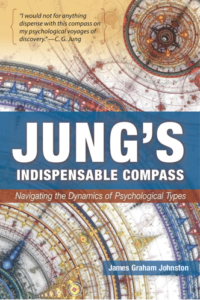In the previous letter, we noted that there are at least two types of awareness that lie outside Jung’s type model but may be considered attributes of the individual personality: 1. awareness of another’s personal presence 2. awareness of ego consciousness itself.
In this letter, we will consider another mode of consciousness that provides clues to the nature and expanse of the whole personality.
We might conflate the terms “ego” and “personality,” but to do so would demean qualities of personality generally and would annul significant elements of Jung’s larger work. If Jung had equated personality with ego, he would never have noted that “personality is Tao.”Individuation is not the transformation of the ego, but rather the integration and transformation of the whole human personality.
By personality, Jung did not mean “persona”–the social mask, with its various attributes, perceived by others. “She has a nice personality” is more a reference to her persona than to personality. Nor did Jung equate dispositions of ego consciousness with “personality types.” He objected to using his model of conscious orientations to put people into categories of personality.
We must look deeper to consider this special term, personality. Our animal relatives may have egos–perceiving and deciding “executives” of consciousness, and each may have special capacities of perception that we lack; but there are attributes that we possess that seem certainly to be missing in them. Those attributes are much more complex than the “opposable thumb” sometimes cited by anthropologists as a key distinguishing feature of humans. We are not only different in form; we are also different in kind.
We have built-in frameworks for apprehending and appreciating intangible values and ideas. Plato considered three “Ideas” to be paramount: the Good, the Beautiful and the True. Jung considered them elements of a supra-conscious framework for understanding the world; he called that framework the archetypal unconscious and termed it the “inner object” to distinguish it from the “outer object” of the world at large.
It is to these inner objects: the archetypal images, ideals, and ideas that each of the four introverted attitudes is oriented. The introverted attitudes deliver a consciousness of another realm of life, dramatically different from the objective relationships normally associated with ego awareness. This additional internal awareness of inner objects distinguishes human personality.
Jung noted that many of the archetypes in the vast unconscious array may be born from the evolutionary ascent, binding us inextricably and unconsciously to million-year layers of organic transformation. But ideas and ideals like truth, beauty, goodness are different. They are elements of nuanced orientations to life that are new and different in kind from other more organic archetypal frameworks, for they raise us up from a purely material experience oriented to the world, to aspirations beyond the drone of competitive survival.
They are attributes of the human experience that begin to help us more fully grasp the full and robust nature of the whole personality.

